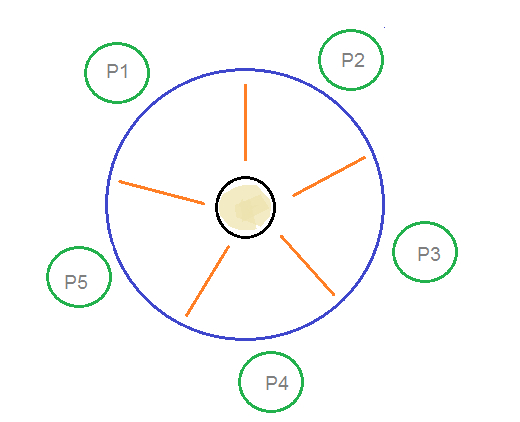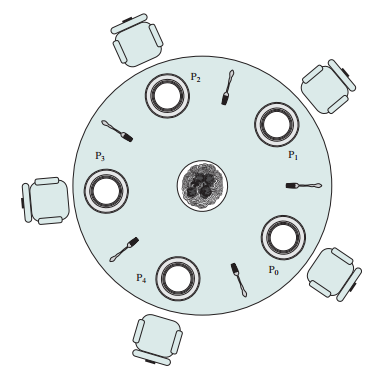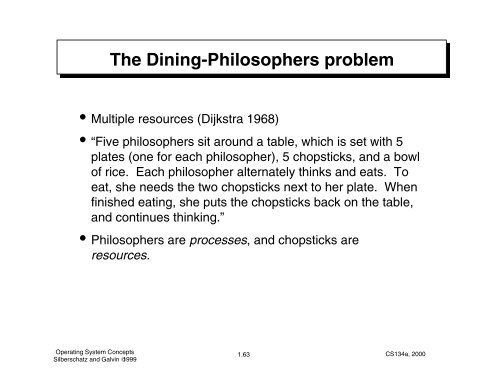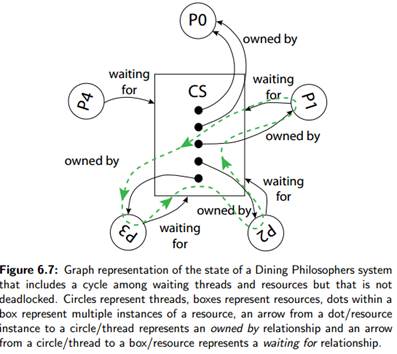Dining Philosophers Problem In Os Pdf
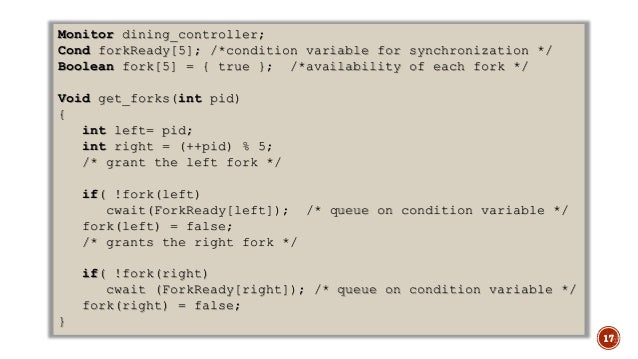
Taken at face value it is a pretty meaningless problem but it is typical of many synchronization problems that you will see when allocating resources in operating systems.
Dining philosophers problem in os pdf. The dining philosophers problem is another classic synchronization problem which is used to evaluate situations where there is a need of allocating multiple resources to multiple processes. Soon after tony hoare gave the problem. The dining table has five chopsticks and a bowl of rice in the middle as shown in the below figure. The dining philosophers problem.
A philosopher may eat if he can pick up the two forks adjacent to him. The book again chapter 6 has an excellent description of dining philosophers. It was originally formulated in 1965 by edsger dijkstra as a student exam exercise presented in terms of computers competing for access to tape drive peripherals. The dining philosopher s problem is the classical problem of synchronization which says that five philosophers are sitting around a circular table and their job is to think and eat alternatively.
The five philosophers sit at a circular table with a bowl of rice in the center. There is one chopstick between each philosopher. Prerequisite process synchronization semaphores dining philosophers solution using monitors the dining philosopher problem the dining philosopher problem states that k philosophers seated around a circular table with one chopstick between each pair of philosophers. The dining philosopher s problem is a problem with five philosophers sitting at a table.
One fork may be picked up by any one of its adjacent followers but not both. Computer science mca operating system. When a philosopher wants to think he keeps down both. A philosopher may eat if he can pickup the two chopsticks adjacent to him.
A bowl of noodles is placed at the center of the table along with five chopsticks for each of the philosophers. The dining philosophers problem states that there are 5 philosophers sharing a circular table and they eat and think alternatively. Include pthread h. When a philosopher wants to eat he uses two chopsticks one from their left and one from their right.
A hungry philosopher may only eat if. In computer science the dining philosophers problem is an example problem often used in concurrent algorithm design to illustrate synchronization issues and techniques for resolving them. Dining philosophers the dining philosophers problem is a classical synchronization problem. A fork is placed in between each pair of adjacent philosophers.
The dining philosopher problem the dining philosopher problem states that k philosophers seated around a circular table with one chopstick between each pair of philosophers. There is one fork between each philosopher. At any instant a philosopher is either eating or thinking. A presentation on the dining philosopher s problem explaining the problem issues while solving the problem and solutions to the problem.
There is a bowl of rice for each of the philosophers and 5 chopsticks.



